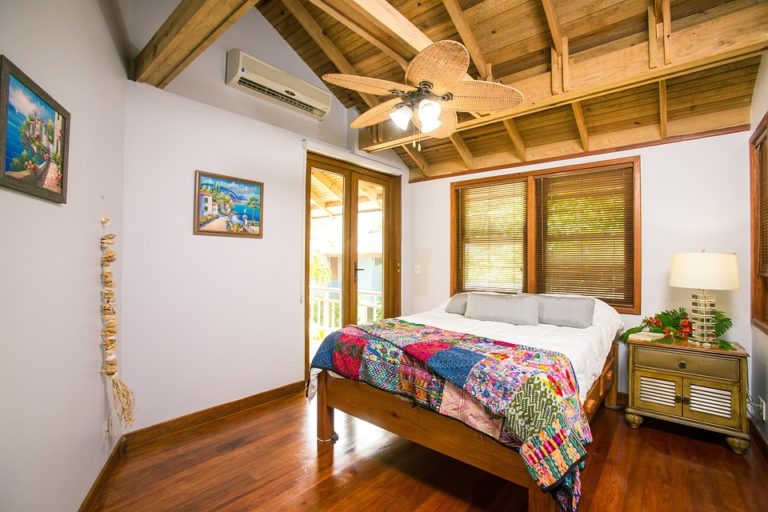
With harsh winters and frigid temperatures, it’s no surprise that Canadians find solace in escaping to vacation properties to enjoy the warm weather and beautiful outdoor environment.
Whether you own a cottage, camp or a beach house, you need to make sure you have proper insurance policies in place to protect your investment from damage and liability. Vacation property insurance differs from regular home insurance, so it is important that you speak with an insurance professional to ensure your summer getaway is properly insured.
What is Vacation Property Insurance?
Vacation property insurance is a policy that covers a property that is not your primary residence. It is also known as “cottage insurance”, “seasonal insurance” and “other property insurance”.
Typical vacation property coverage includes:
- Coverage on the property and contents. This includes damage, loss or destruction due to specific factors such as fire or vandalism.
- Liability coverage. This covers damage or injury to anyone physically present on your property. If someone is injured, this portion of the policy will cover up to a certain amount should a lawsuit occur.
Purchasing a Policy
When it comes to purchasing a vacation property policy, you have the option of bundling the coverage with your current home insurance policy. Most, if not all, companies will offer a bundle discount for insuring multiple policies with them.
You can purchase a separate insurance policy for your vacation property, but most companies will not recommend it.
The Difference Between Home Insurance and Vacation Property Insurance
Because vacation properties carry a higher risk than homes do, there are some exclusions as to what a vacation property policy will cover.
Vacation properties are considered high risk for many reasons, including the fact that damage may go unnoticed during the months not in use and they pose a higher risk of theft (depending on location).
Named Perils versus All Perils
Named peril insurance policies only cover what is specifically noted in the policy. So if your policy does not state that it covers floods, you won’t be covered for any flood damages. Vacation property insurance companies are named peril policies. With named peril policies, the burden is placed on the property owner to prove that a certain peril caused insurable damage.
Regular home insurance policies are typically all peril policies. This means that everything except specifically named exclusions are covered by the insurance policy. With all peril policies, the burden is placed on the insurance company to prove that a certain peril caused insurable damage.
Vacation Property Exclusions
Some vacation property policy exclusions include:
- Sewer backup coverage
- Damage to fences and gardening equipment
- Food stored in freezers
- Damage to trees, shrubs and outdoor plants
- Intentional or criminal activity
- Freezing of pipes or indoor plumbing
- Normal wear and tear
- Rodents, insects and termites
Getting Your Vacation Property Ready
Before you swing open the windows and haul out the weekend gear, you should do a preseason check on your property and update any changes with your insurance company.
Complete an interior and exterior of check of the property for any damages that will require a claim or for any structural changes that should be reported to your insurance broker.
Interior and Exterior Check
When you inspect the property, you should look for the following:
- Water damage to the windows, floors and/or ceilings.
- Signs of mold or rot.
- Test electrical breakers.
- Water damage or cracks on foundation.
- Cracks in siding.
- Leaks in propane tanks or gas fittings.
- Leaks in septic system.
Updates to Property
Any updates or additions to the property must be reported to the insurance company. If you upgrade the floors or the roof, for example, you must include it in your coverage. Otherwise, any damage to these features will not be covered by your policy.
Additionally, any detached structures placed or constructed on the property must be reported as well. These include guesthouses, boathouses, shed and latrines.
Lastly, you’re going to want to report any new content, such as furniture, in order to have it covered under your policy.
Factors That May Impact Policy Costs
Like any insurance policy, there are certain factors that may increase the cost of your vacation property coverage.
Location plays a big part in the cost of the insurance policy. For instance, vacation properties built in flood or earthquake zones, or in any location that is affected by weather, will come at a higher premium. This applies to remote locations as well, where theft and vandalism risks are higher.
The type of property will determine cost as well. You insurance company will take the age of the structure, as well as the building materials, into consideration when calculating your insurance rate.
Lastly, certain amenities on the property can increase the cost of the policy. Hot tubs and pools, for example, impact rates since they post a higher risk of bodily harm.
Looking to Insure Your Vacation Property?
Talk to a trusted insurance expert to make sure the “proper” is put into your vacation property insurance! Contact us today to get a quote or if you have any questions about your summer getaway vacation property.

